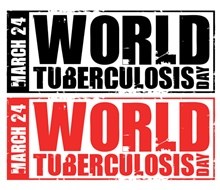World TB Day aims for zero deaths worldwide
World Tuberculosis Day, celebrated on 24 March 2014, this year aims to reach all those who are not receiving the proper treatment and care, and to attain the goal of zero TB deaths worldwide, with its theme, 'A TB test, treatment and cure for all'. The event annually marks the day in 1882 when Doctor Robert Koch detected the cause of TB - creating the first steps towards the successful diagnosis and treatment of the disease.

© vospalej - Fotolia.com
Allison Vienings, executive director of the Self-Medication Manufacturers Association of South Africa (SMASA), says that while TB remains one of the most prevalent killers in the world, decisive action in line with the 2014 theme can have a tremendous impact on the spread of the disease.
SMASA urges every South African to start taking better care through good personal hygiene, exercise and basic lifestyle changes and to avoid factors that may contribute to the spread of the bacteria. "Take responsibility for yourself. If you think you might have any or all of the symptoms associated with TB, visit your local health care professional, clinic or doctor immediately."
Tuberculosis is an infectious bacterial disease, which most commonly affects the lungs and is transmitted from one person to another via droplets from the throat and lungs of an infected person. With approximately a third of the world's population infected with the bacteria, the importance of creating awareness to help the estimated 3-million people who are missed every year by the health system for the past six years cannot be overemphasised.
"A healthy lifestyle is one of the simple ways to prevent TB, but often most difficult for people to incorporate. Exercise, adequate sleep and rest, a balanced diet, limiting the amount of alcohol consumed, as well as quitting smoking are some of the ways to reduce the spread of the bacteria," says Vienings.
Only a percentage of people infected will become sick with TB, while people with weakened immune systems are at a greater risk of falling ill from the infection. People living with HIV in particular are 20 to 30 times more likely to develop active TB.
In 2012, nearly 9-million people contracted the bacteria with around 1.3-million TB-related deaths worldwide and, according to the World Health Organisation (WHO, it is the leading killer of HIV-infected people. In South Africa alone, there was an estimated 500,000 cases of active TB in 2011, the highest stats after India and China. It continues to be the leading cause of death in SA.
Symptoms
There are two types of TB - latent and active. People with latent TB are not contagious and often show none of the symptoms associated with TB, whereas people with active TB are contagious and may have many of the TB symptoms.
"With the different forms of TB, the symptoms are not always as clean-cut and vary from case to case," says Vienings. Some of the usual symptoms, however, include:
- Persistent coughing with bloody mucus
- Fatigue
- Weight loss, slight fever, night sweats
- Pain in the chest
Treatment
The key to stopping the spread of TB in a community is to treat patients who are coughing up living TB bacilli. For this, new and previously treated patients are handled differently. "Treatment depends on whether a patient has previously received anti-TB drugs and potentially may have since acquired a resistance. It is crucial that the correct drugs are given for the correct period, and no medicines skipped."
By skipping a dose or discontinuing treatment, the infection can become resistant to the drugs, which in turn prolongs the length of treatment, which requires a different anti-TB drug to be used. When people find it difficult to take their medicine diligently, supervised treatment is recommended. A nurse or social care support worker will be appointed as a point of contact between the patient and the team of experts in charge of treatment and this can be done at a clinic or in certain cases at the home of the patient.
How to prevent TB
Early diagnosis and treatment is crucial in restricting the spread of the disease. People who are in constant close proximity with an infected individual, such as family members and co-workers, should be examined as well.